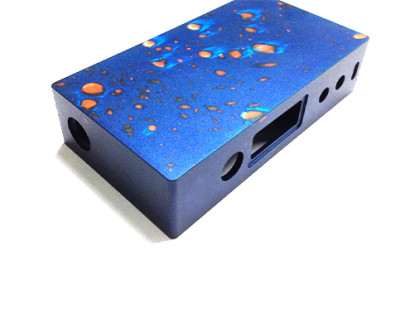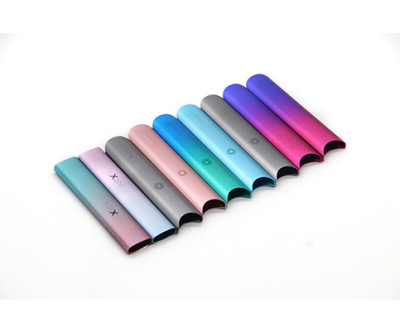Why is the titanium alloy frame of iPhone 15 a difficult material to machining?
On September 13, Apple released the iPhone 15 series of mobile phones. It is worth mentioning that this is the first time that titanium alloy frames have appeared on smartphones.
Titanium alloy is a lightweight, corrosion-resistant, and high-strength material. When used in smartphones, it can improve the overall strength, drop resistance, and scratch resistance of the phone. However, titanium alloy is a difficult-to-machine material, and the introduction of titanium alloy frames is also a challenge in CNC technology.
Why do we think titanium alloy is a difficult material to machining? Let’s learn about its related cutting processing characteristics.
First: "Heat" is the "culprit" that makes titanium alloys difficult to process
The cutting force when processing titanium alloys is only slightly higher than that of steel of the same hardness, but the physical phenomena of processing titanium alloys are much more complex than processing steel, making titanium alloy processing faced with huge difficulties.
The thermal conductivity of most titanium alloys is very low, only 1/7 of steel and 1/16 of aluminum. Therefore, the heat generated during the cutting of titanium alloy will not be quickly transferred to the workpiece or taken away by the chips, but will be concentrated in the cutting area. The temperature generated can be as high as over 1000°C, causing the cutting edge of the tool to rapidly wear, crack, and form. Built-up edge, a rapidly worn cutting edge, generates more heat in the cutting area, further shortening the life of the tool.
The high temperatures generated during the cutting process also destroy the surface integrity of titanium alloy parts, leading to a decrease in the geometric accuracy of the parts and a work-hardening phenomenon that seriously reduces their fatigue strength.
The elasticity of titanium alloys may be beneficial to part performance, but during the cutting process, the elastic deformation of the workpiece is an important cause of vibration. Cutting pressure causes the "elastic" workpiece to move away from the tool and rebound, causing the friction between the tool and workpiece to outweigh the cutting action. The friction process also generates heat, which aggravates the problem of poor thermal conductivity of titanium alloys.
This problem is even more serious when processing thin-walled or ring-shaped parts that are easily deformed. It is not an easy task to process titanium alloy thin-walled parts to the expected dimensional accuracy. Because when the workpiece material is pushed away by the tool, the local deformation of the thin wall has exceeded the elastic range and produces plastic deformation, the material strength and hardness of the cutting point increase significantly. At this time, the originally determined cutting speed becomes too high, further causing rapid tool wear.
Second: Process know-how for processing titanium alloys
On the basis of understanding the processing mechanism of titanium alloys and adding past experience, the main process know-how for processing titanium alloys is as follows:
(1) Use inserts with positive angle geometry to reduce cutting force, cutting heat and deformation of the workpiece.
(2) Maintain a constant feed to avoid hardening of the workpiece. The tool must always be in the feed state during the cutting process. The radial tool engagement amount ae during milling should be 30% of the radius.
(3) Use high-pressure and large-flow cutting fluid to ensure the thermal stability of the machining process and prevent workpiece surface deformation and tool damage caused by excessive temperature.
(4) Keep the blade edge sharp. Blunt tools are the cause of heat accumulation and wear, which can easily lead to tool failure.
(5) Process the titanium alloy in the softest state as much as possible, because the material becomes more difficult to process after quenching, and heat treatment increases the strength of the material and increases blade wear.
(6) Use a large tool tip arc radius or chamfer to cut as much as possible into the cutting edge. This reduces cutting force and heat at every point and prevents local breakage. When milling titanium alloy, among the cutting parameters, cutting speed has the greatest impact on tool life vc, followed by radial tool engagement (milling depth) ae.
Third: Start with blades to solve titanium processing problems
The blade groove wear that occurs when machining titanium alloys is the local wear of the back and front along the cutting depth direction. It is often caused by the hardened layer left by the previous processing. The chemical reaction and diffusion between the tool and the workpiece material at processing temperatures exceeding 800°C are also one of the causes of groove wear.
Because during the machining process, the titanium molecules of the workpiece accumulate in front of the blade and are "welded" to the blade under high pressure and high temperature, forming built-up edge. When built-up edge peels off the cutting edge, it takes the insert's carbide coating with it, so titanium machining requires special insert materials and geometries.
Fourth: Tool structure suitable for titanium machining
The focus of titanium alloy processing is heat. A large amount of high-pressure cutting fluid must be sprayed on the cutting edge promptly and accurately to remove the heat quickly. There are unique structures of milling cutters on the market specifically for titanium alloy processing.




